sam
TFF member

Posts: 341
|
Post by sam on Nov 12, 2012 10:57:20 GMT
Palace Avenue - What has happened to all the cherry trees. It was an absolute picture in the spring. Good memories from Ricardo. Who remembers Wilderspins stamp shop in Winner Street.
What about Jeck, the tramp who would shout at the youngsters when he was teased. Who remembers having Gaytons fish and chips before catching the football special bus to Plainmoor. How did I manage to get in a YMCA Torbay team with players such as Bryan Helley, Mike Griffiths, Dave Harrison to name but a few, playing. What about Coysh's toy shop in Victoria Street. Paignton was a real nice town but starting with Dellers demise and turning Torbay Road into one big arcade had an adverse effect. I am still amazed how that nondescript block of flats above the harbour on which was formerly Headland House was ever given planning permission. The best site perhaps in Paignton with the most bland building. However, Paignton still has plenty of things going for it and is still a nice place to live but it could have been so much better.
|
|
Dave
TFF member

Posts: 13,081
|
Post by Dave on Nov 12, 2012 16:26:52 GMT
Thanks for your post Sam, some good old memories there for sure. Being a Newton boy I do not remember Dellers, but know all the older folk in Paignton, miss the place and the fine building it was in. I suppose Dellers was Newton Abbots Madge Mellors. The Dellers were rich it seems and had other business and property's in the town along with a wonderful Dellers cafe in Exeter that got destroyed during the last war. There was also a Dellers Summer cafe and looking at pictures I have seen of it, I think its the building on the seafront that later became know as the Lighthouse nightclub. An old picture of the Dellers Cafe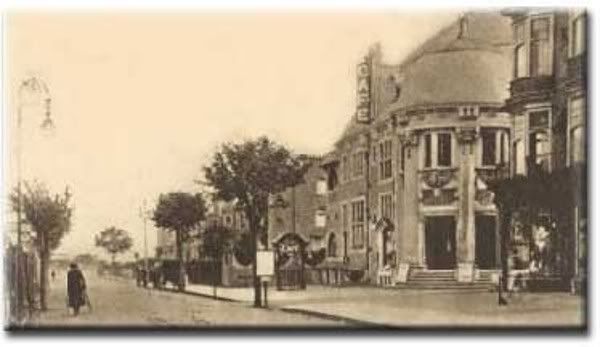 There are so many other shops etc that you will remember that are no longer in Paignton. Here are just a few of them. Record shops — Paul Pinch, Harris Osborne, Soundz
The big drum clock outside the old Torbay News office
The Odd Spot café, Pelosis and Mactavish's Kitchen. The Hasty Tasty takeaway
The ice cream stall in the bus station with the cartoon cow licking a Pollards cornet and the words 'Yer Tiz' painted over the top. The bus station café
The Middle Room Club, the Tropicana/Blue Angel and the Casino,The Torbay Cinema and the Regent, Father Christmas at Rossiters
Gladwyns in Hyde Road, where the elegant young gentleman about town could be suited and booted. Perretts in Torbay Road, where older gentlemen could avail themselves of a similar service. In the workshops upstairs expert hands created the finest made-to-measure suits.
The joke shop in Winner Street, The bike shop in Winner Street
The Wimpy Bar in Victoria Street, The shoe shop in Church Street where they sold Torquay United tickets and souvenirs. The sports shop in Church Street
The Labour Club, The big slide in Victoria Park, The Peter Pan Playground at Goodrington, Paignton Aquarium and Torbay Aircraft MuseumOn my walk yesterday afternoon around the old parts of Paignton I took a number of pictures and will do a post with some of them soon. I came across a very small building that was last used in 1867 that I never knew existed, So a quiz question I'm sure many will be able to answer, what was this building used as?? 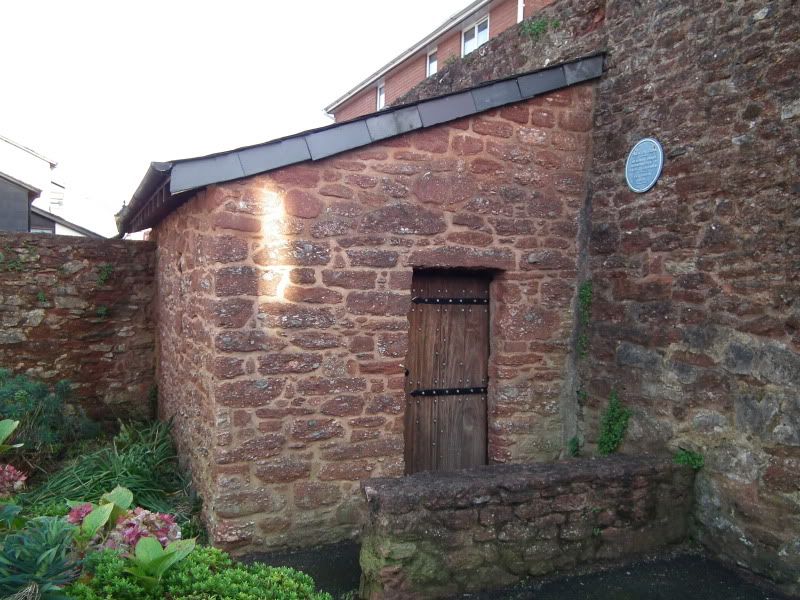 |
|
|
|
Post by lambethgull on Nov 12, 2012 16:45:22 GMT
A prison cell?
|
|
Dave
TFF member

Posts: 13,081
|
Post by Dave on Nov 12, 2012 17:44:43 GMT
Correct Lambie ;D 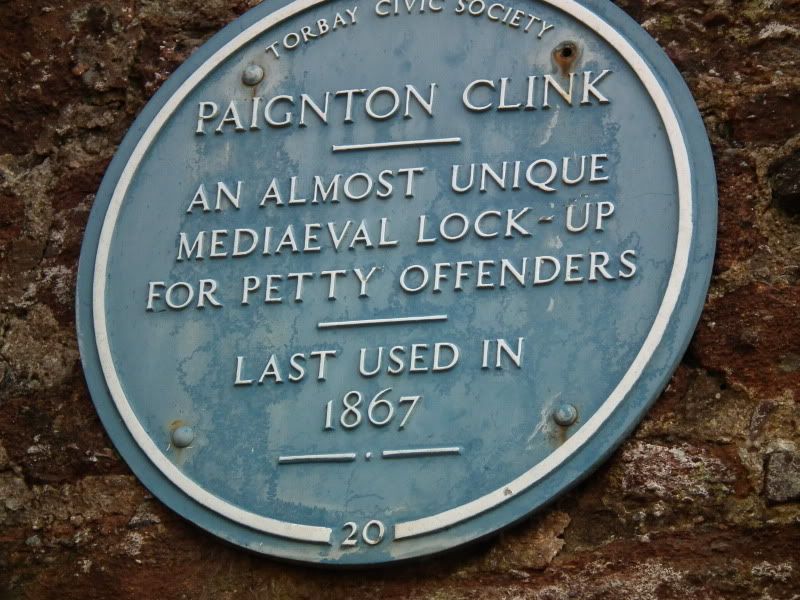 |
|
|
|
Post by lambethgull on Nov 12, 2012 18:07:41 GMT
 - that's not jmgull's bed for the night is it?  No, I remember having a wander around that part of Paignton a couple of years back and seeing it then. I wasn't certain however, as I'd had a few lunchtime pints in the Palace Place beforehand. That area of town has a nice chilled out feel to it actually, and the historical buildings and walls contrast quite significantly with the rest of the town.
|
|
Dave
TFF member

Posts: 13,081
|
Post by Dave on Nov 12, 2012 19:13:00 GMT
Most of us can remember when there were three cinema's In Paignton before the Festival Theatre, was converted into a multiplex.. There was the one on the corner near the bus station, what was that one called? The Odeon by the entrance to Oldway Mansions and the one that is still standing the old Paignton Picture House. There was a forth one and I will tell you where it was if you do not already know. But first the story of what is believed to be the oldest purpose picture house still standing. Only just mind you as its falling badly into disrepair, but plans hopefully to restore it and open it once again, are being talked about. The cinema was built on the site of The Broadmead Hotel, or more precisely to the back of it. The auditorium or hall being built first, sometime between 1907 and 1910 as the Paignton Bioscopic Exhibition centre - the word 'cinema' didn't exist in those days. People would come through the front door of the hotel, through its hall into the auditorium to watch slides and short films of about 4 to 5 minutes each, with a 21 piece orchestra playing during the showing. As the showings became more popular a proper cinema was built in place of the hall and the hotel was then closed and knocked down. The final part of the present building, the office block to the side was completed in 1913, and the Paignton Picture House was formed. In 1987 the cinema was taken over by the Dart Valley Steam railway whose Paignton Station entrance is alongside. They had a grandiose idea for using the cinema as a booking hall on the lines of The Grand Central Station in New York. Their plans for this were thwarted when Torbay Council and English Heritage became involved, with the Picture House being declared a Grade II listed building in 1991. It continued as a cinema until 26th September 1999 when it finally closed due to a number of reasons - one of which was that the Festival Theatre on the sea front was converted into a multiplex. It has remained closed since then with only the minimum care and attention being given to it by its owners. An old shot 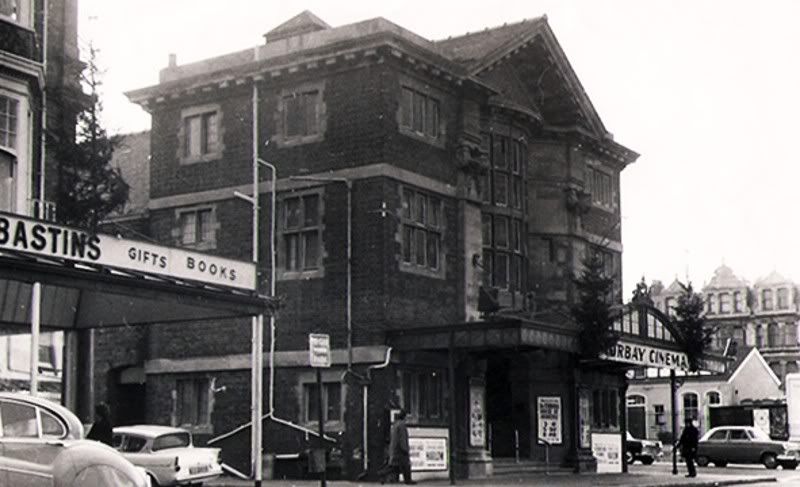 How it looks today How it looks today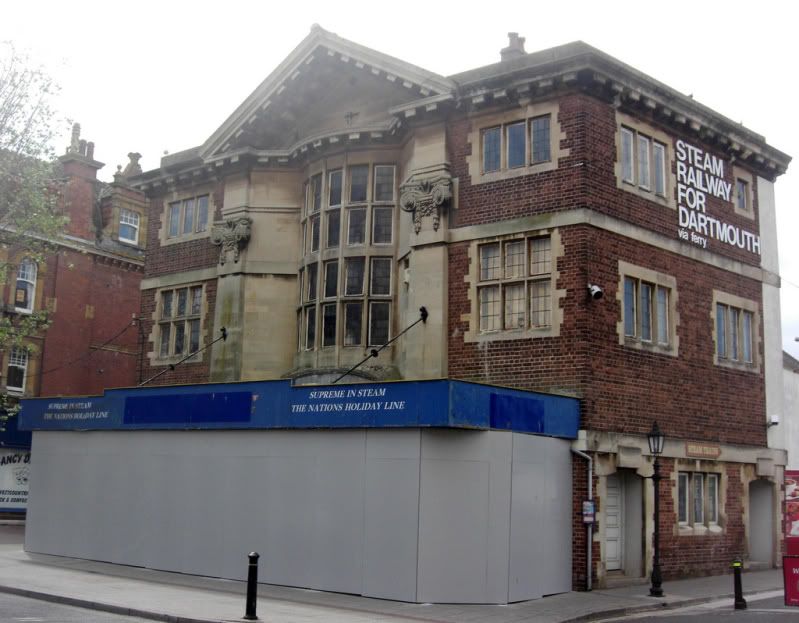 So what was the forth cinema in Paignton, which in its hey day was also very popular? . The Electric Palace/Triangle Cinedrome It was opened to the public in 1911 by the proprietor, Major A.O. Ellis who envisaged the oncoming popularity of moving pictures. Arguably it was the first picture house to show movies in Paignton, a flag was flown over the tower to announce its opening Curious crowds soon filled the small 280 seat auditorium and were soon in roars of laughter at what they saw, some of the first Charlie Chaplin shorts were soon favourites along with Laurel and Hardy, Harold Lloyd and Buster Keaton. The times were hard and severe and it was a sheer delight to share the wondrous excitement with others The oval archway which marks the spot where the foyer was situated in Totnes road is still apparent over what is now the tax office, one can imagine the queues of exited people waiting to go in, Unfortunately the narrow pathway was to be the demise of the old cinema because in 1949, following several accidents, one fatal - outgoing patrons being slow to adjust to daylight after the darkness inside, and with increasing traffic it was obliged to close. And of course, the Picture House in nearby Torbay Road had much more room boasting 600 seats with ample room outside as well. |
|
Deleted
Deleted Member
Posts: 0
|
Post by Deleted on Nov 12, 2012 19:58:28 GMT
chelstongull Careless talk costs tourists. I've never seen anything but cloudless blue skies when I've visited Paignton    |
|
|
|
Post by gullone on Nov 13, 2012 10:45:00 GMT
Wasnt the large model shop in Winner Street called Mansells if i remember rightly. As a ten or eleven year old that was where the pocket money was spent on the latest Airfix kits. Im wonder if there is any distant connection to our midfielder............small world and all that, you never know.
|
|
chelstongull
TFF member

Posts: 6,759
Favourite Player: Jason Fowler
|
Post by chelstongull on Nov 13, 2012 11:23:52 GMT
Wasnt the large model shop in Winner Street called Mansells if i remember rightly. As a ten or eleven year old that was where the pocket money was spent on the latest Airfix kits. Im wonder if there is any distant connection to our midfielder............small world and all that, you never know. Originally at the top end of Palace Avenue I believe. Most of my 1/2 Crowns went on various Airfix models when I was a tacker. Could you imagine being the son of the owner and having all the Airfix kits you want for nowt! Happy days - I used to smile in those days. |
|
Dave
TFF member

Posts: 13,081
|
Post by Dave on Nov 13, 2012 18:59:52 GMT
I find it strange that one subject I hated at school, has fast become one of my favourite years as I have got older. It had nothing to do with my history teacher, he was a very good teacher indeed, but I only wanted to know about the world I was living and what lay ahead for me. Why did I want to learn about things that happened before I was born and about people I was never going to meet since they were dead and buried.
I’m not sure when my interest in history first started to come alive, but I suspect it was while standing in some ruined castle. A place where one can stand and look over the castle walls and with the right imagination, see Cromwell and his men matching up the hill to attack the castle.
Looking back inside the castle and seeing some pig being roasted on a spit, while court jesters entertained. The feeling that the place I was standing in, had once had so many people from such a long time ago, living and working there, and it was a lifestyle so different from the one I knew. Watching films and documentaries have made it easy for me to close my eyes and be taken back to yesteryear.
From castles it was onto National Trust properties and then just trying to find out as much as possible about any place I went to visit. I’m sure there is far more history that has been lost then we will ever find out and learn about. I suppose some written documents exist for so much we were taught in school, other history my have only been handed down by word of mouth from generation to generation. Its this history I’m sure gets lost as some fail to pass it on.
I grew up in Newton Abbot and had some of the history of that town handed down to me, I know from taking to the young lads who work with me, that the same history has not been handed down to them. I also did a lot of research on the town and feel I have learned as much as I can as far as the history of Newton Abbot is concerned.
Paignton is my home now and has been for ell over twenty years and what really do I know about the place? The streets and buildings (mostly) are the only ones I know and yet this town like all others have changed and grew over the years.
This thread has stirred up my need to try and learn all I can about Paignton, how it grew, how the changes came in and any events that stand out in its history. I now have far more questions than I have answers and am not sure I will end up finding all the answers I’m looking for.
On Sunday I walked around what is called the old part of Paignton, IE Winner Street and Church Street, but I did not get the feeling I was really standing in streets that were so old. As Paignton is mentioned in the Domesday Book of AD 1086 , there had to be a settlement built somewhere and I do think it was the Winner Street area.
I may be wrong but I suspect the area between the The Coverdale Tower and Kirkham House was once the main area of Paignton and all the rest came much latter. I have learned about the cabbage field that is now Place Avenue built there because it was felt the land reclaimed from the sea was not suitable to build on. I read this land was on the other side of the railway line, how much land was reclaimed, just how far did the sea once come in.
Was Victoria street built after Place Avenue, then maybe Torbay and Hyde Road? This I hope to learn and if anyone has or can find any old map I would love to see them.
On this thread I intend over the coming months to add as much as I can find out and do so reports on the things that have now gone etc.
|
|
|
|
Post by ricardo on Nov 13, 2012 23:59:04 GMT
Gullone - I can help with the story behind Mansel's model shop. As Chelston has alluded to in his subsequent post, I grew up there!
My old man, Mansel Williams (RIP) originally bought premises at the top end of Palace Avenue, next door to what was then the Co-op. He opened it as a coffee bar in the fifties and it became very popular with the local teenagers. I believe that it was one of the first places in Paignton to have one of those new-fangled juke boxes. Would love to hear from any older members who can recall this?
I believe that after some years a troublesome element started to make life uncomfortable so Dad took the decison to relaunch the business as a model / DIY furniture shop. We lived above the shop until I was 11 when we moved to Brixham but he continued to run the shop until he sold it in 1973. The new owners continued under the Mansel name and a few years later moved across the road to the shop you remember on the corner of Palace Avenue and Winner Street.
Sadly there is no known connection with our captain who's surname is spelt with two 'L's.
Sam - I recall the stamp shop in Winner Street but didn't recognise its name. Can remember a whole range of other shops in that street such as the pet shop at the bottom of Clifton Road, Croft's Motorcycles, the butchers, greengrocers and Marshall's newsagent opposite the Oldenberg Inn, and the delicatessen and cycle shop further along.
|
|
|
|
Post by gullone on Nov 14, 2012 11:43:45 GMT
Thanks for that info ricardo, i had a feeling my spelling was suspect! Well the pet shop at the bottom of Clifton Rd is still there and only a mega stones throw away from me up in Waterleat!
|
|
Dave
TFF member

Posts: 13,081
|
Post by Dave on Nov 19, 2012 19:58:36 GMT
That Barton Downs has mentioned Paignton again. I was going to do a post about all the history I have learned this week, but it would take far too long to write and anyway its all put so much better in this document ( link below)than I could ever put it. Before you click the link just a few things to say. It seems I was way of the mark and Winner and Church Street is where it all began. Secondly it does seem the sea might have come in the town side of the railway line before it was put down. Thirdly check out the three maps near the very end that show the town as it was before it boomed in the late 1800's. Lastly look at those maps and you will see a gas works on Cecil Road. Anyone remember them being there? I can only remember the gas works at Hollicombe. www.torbay.gov.uk/old_paignton_caa-3.pdf |
|
JamesB
TFF member

Posts: 1,526
|
Post by JamesB on Nov 19, 2012 23:58:09 GMT
I gather Brunel originally wanted to build the line up to the town but was either denied permission to or unable to for other reasons, so built the line along the coast and the town grew towards it
|
|
Dave
TFF member

Posts: 13,081
|
Post by Dave on Nov 25, 2012 12:49:32 GMT
Finally found a bit of time to add to this thread, I do want to add further to it and cover some other parts of Paignton like the harbour area for example, when I get the time to do so. I did find it hard getting a sense that I was in the very oldest part of Paignton when I walked around the Winner Street and Church Street area. Its not surprising really seeing that both those streets were rebuilt in the Victoria era. But it is a fact that those two streets were once the main heart of Paignton and such roads as the Totnes road were built to bypass what was the main shopping area of the town. Its been clear to see just how the building of the railway line change the whole face of Paignton and how in the end, both Winner Street and Church Street have ended up becoming almost forgotten back streets of the town. Add to that just how much land was reclaimed from the sea and you can see how the town ended up being shifted away from the area where the town was first born. So a few pictures of the old part of Paignton starting with both Winner and Church street. 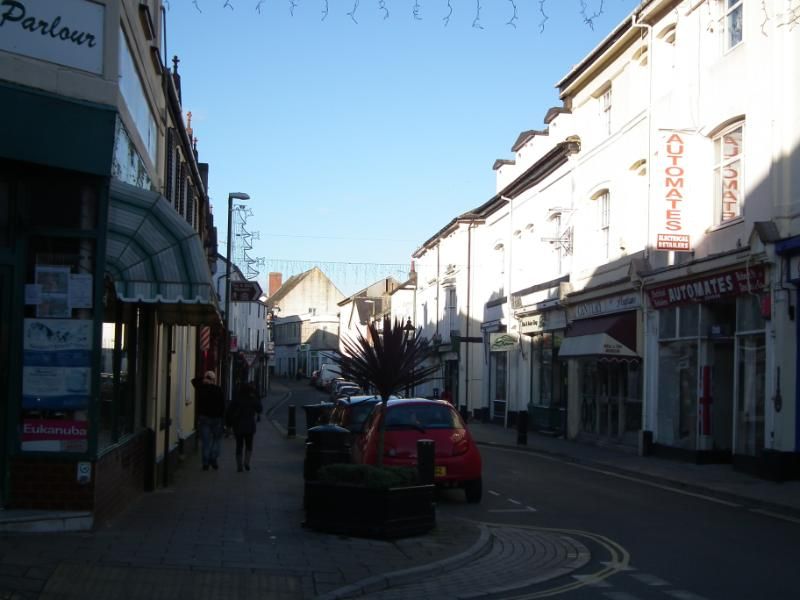 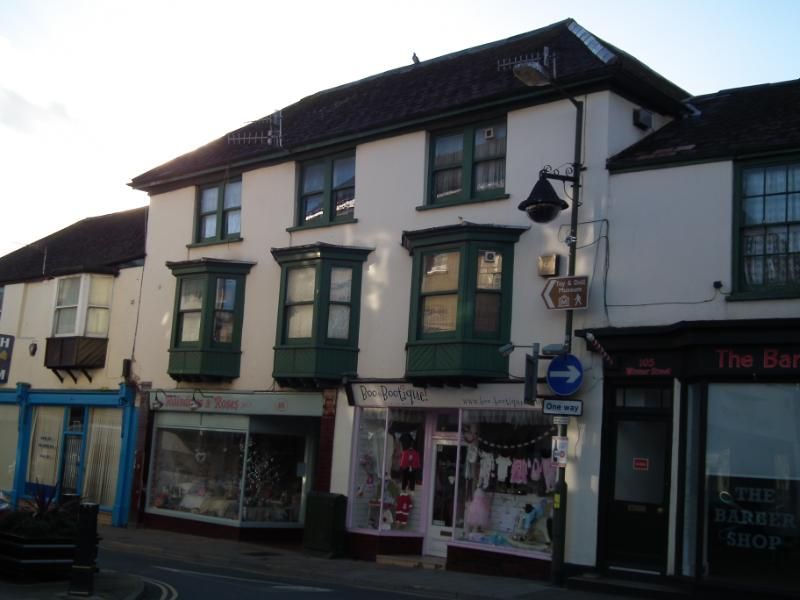 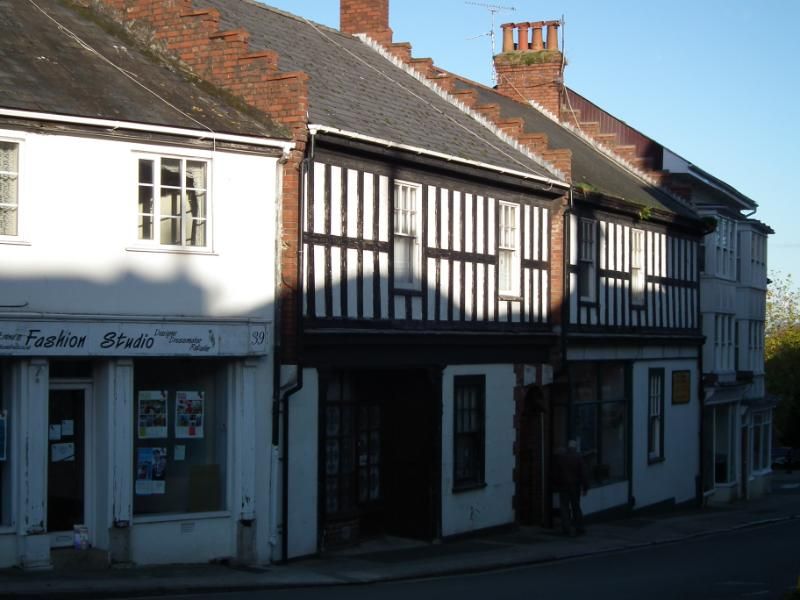 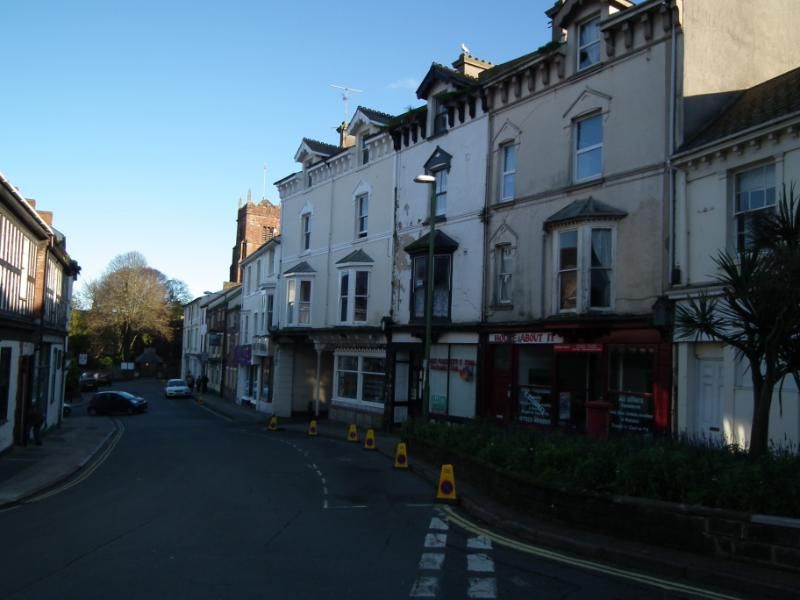 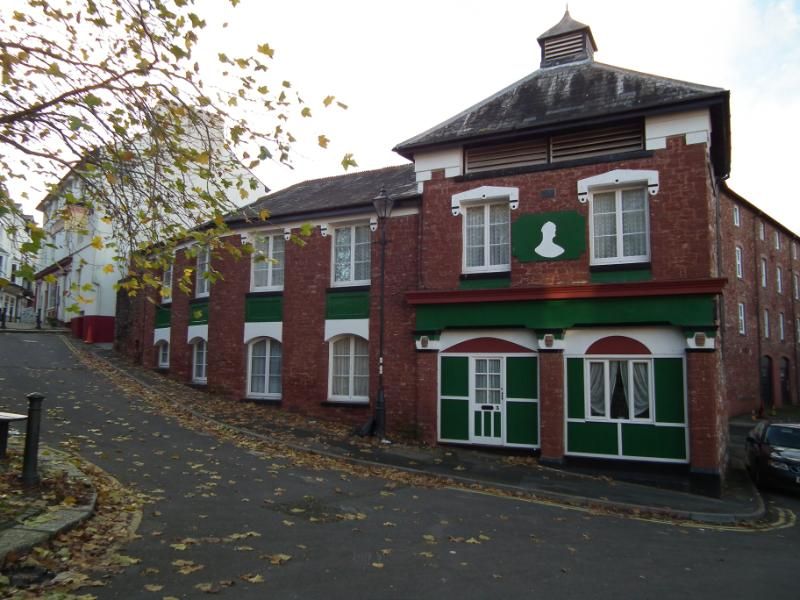 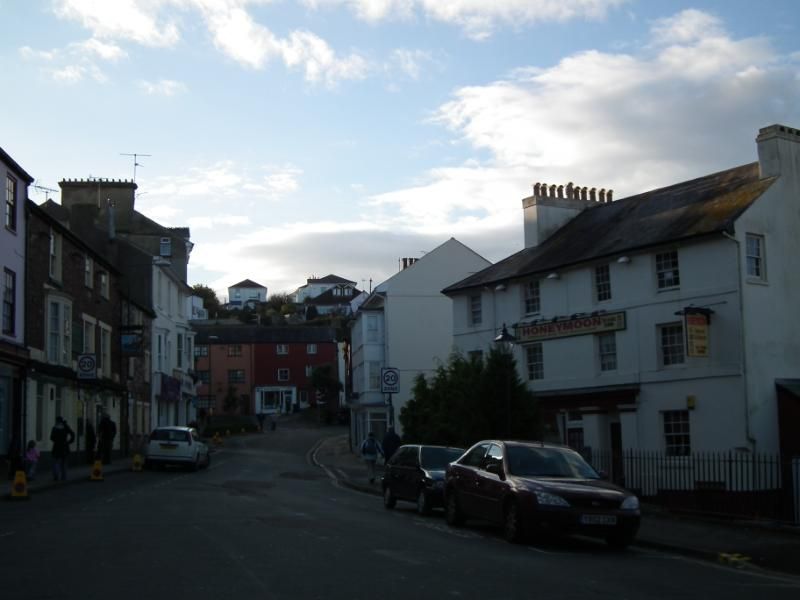 This wonderful old thatched cottage at one end of Kirkham Street was sadly set on fire a good number of years ago by mindless idiots. It stood ruined for a good number of years as I believe there were problems over the insurance. Thankfully in the end it was fully repaired and the only thing that was done differently to the cottage was tiles being used on the porch rather than thatch as that is what had been set on fire before. 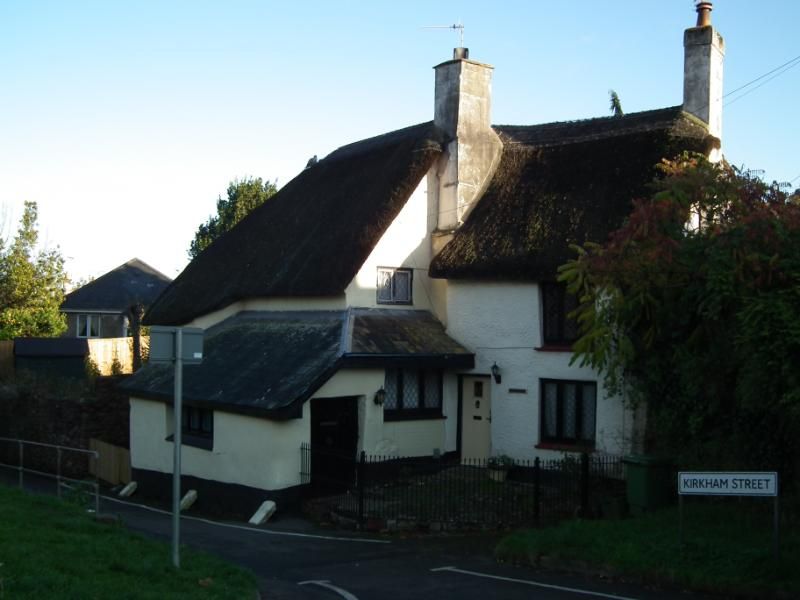 At the other end of Kirkham Steet can be found, Kikrham house, the house is a well-preserved late medieval house, built of local stone. Today Kirkham House stands in a crowded back street opposite new housing of starkly contrasting character. From outside it is hard to imagine it as it once was, probably rendered and limewashed, and surrounded by buildings of a similar nature. Step inside the house, however, and it is possible to forget some of the 21st century bustle. Although it was once known as the Priest’s House, it is more likely to have been the house of a well-to-do landowning or merchant family: the detailing inside the house suggests that it belonged to someone of high status. There are no documents to tell exactly when or by whom it was built. The carving on the woodwork suggests a 14th century date, but the layout of the house is more typical of the 15th century, when a growing desire for privacy led to the creation of separate rooms for different domestic activities. It has the traditional three-room plan found in rural farmhouses of this date. Kirkham House is one of the oldest town houses in Devon and dates from the late 14th cent. It would have gone the same way as most other examples of this period if it hadn't been for the foresight and generosity of a local woman named Ada Jennings. By around 1840 the house had been converted into three dwellings and stayed like that until the whole lot was condemned in the 1930s. Mrs Jennings realised the importance of the derelict cottages and managed to buy them for £600, which was a lot of money then. She then set about getting this 'medieval hall house with cross passage' restored but never lived long enough to see it completed, but she left the property and £9,000 'to the nation' for its restoration which was completed in 1960. 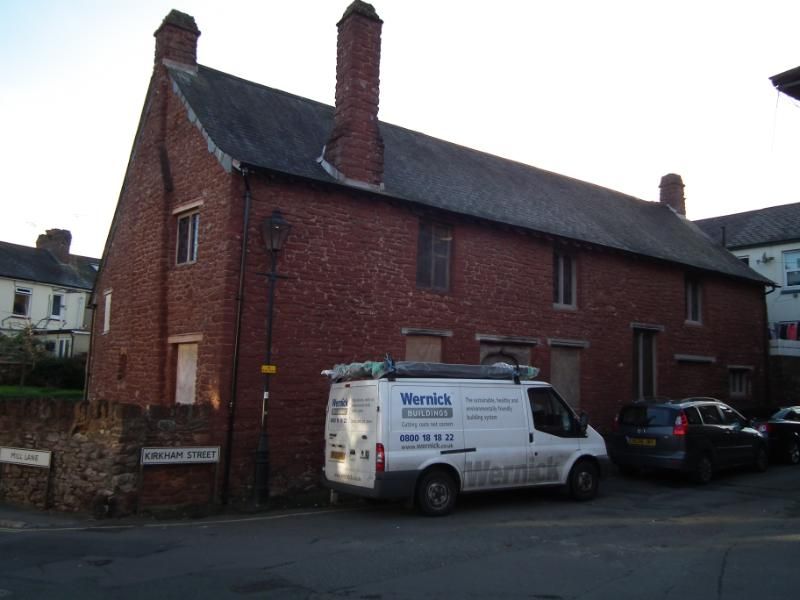 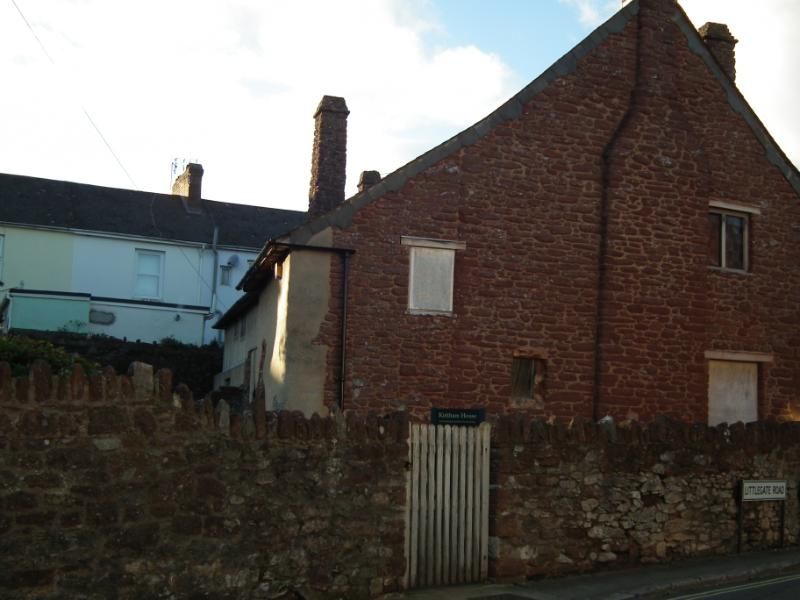 In between Church Street and Place Avenue that was once a cabbage field can be found the Coverdale Tower. It is all that remains of The Bishops Palace that originates from the 14th century and was the residence of the Bishops of Exeter until the 16th century.'. The name 'Coverdale Tower' recalls an erroneous tradition that Miles Coverdale, Bishop of Exeter 1551-3, translated the Bible in it, but his translation was published 16 years before he became Bishop 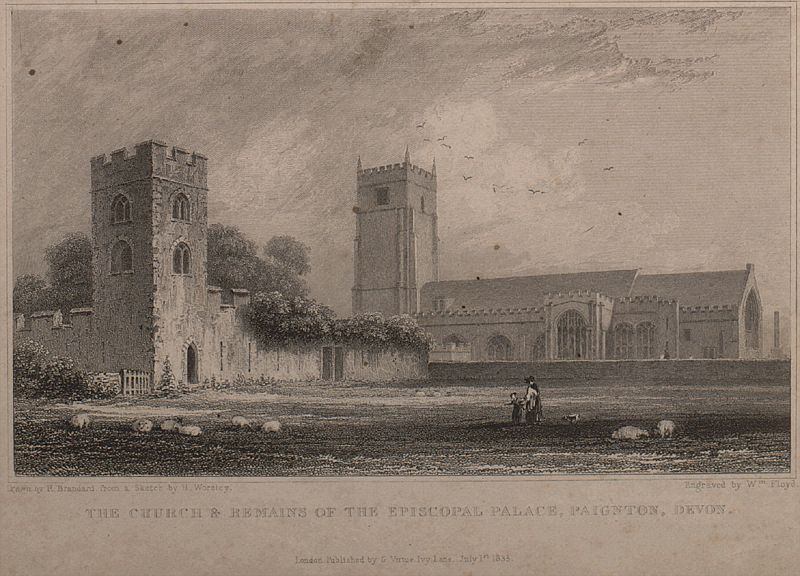 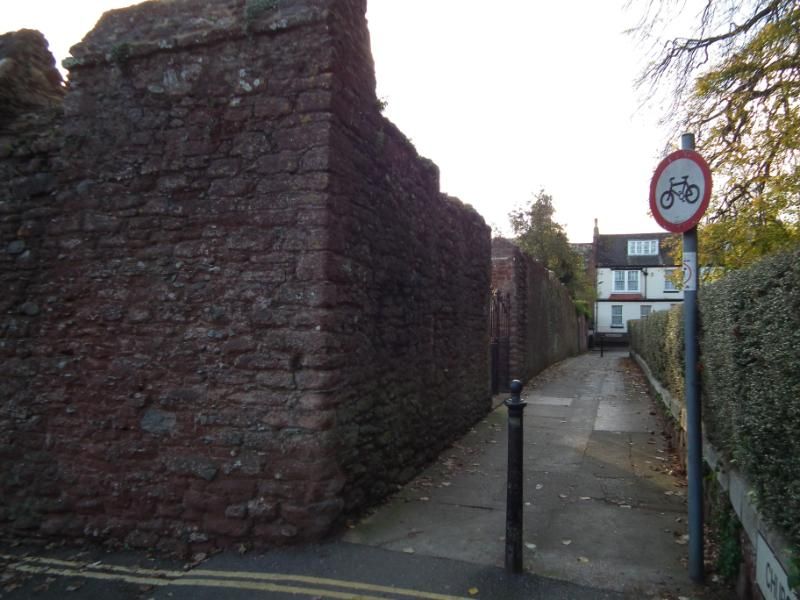 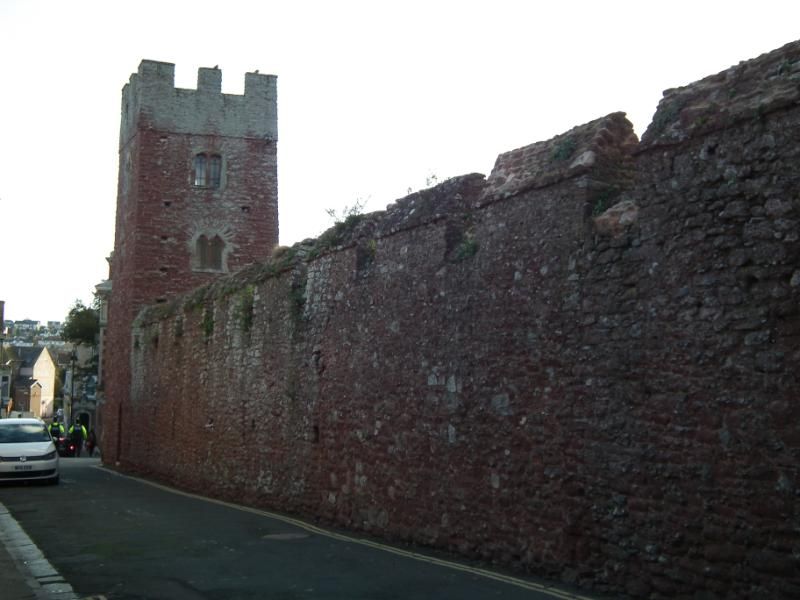 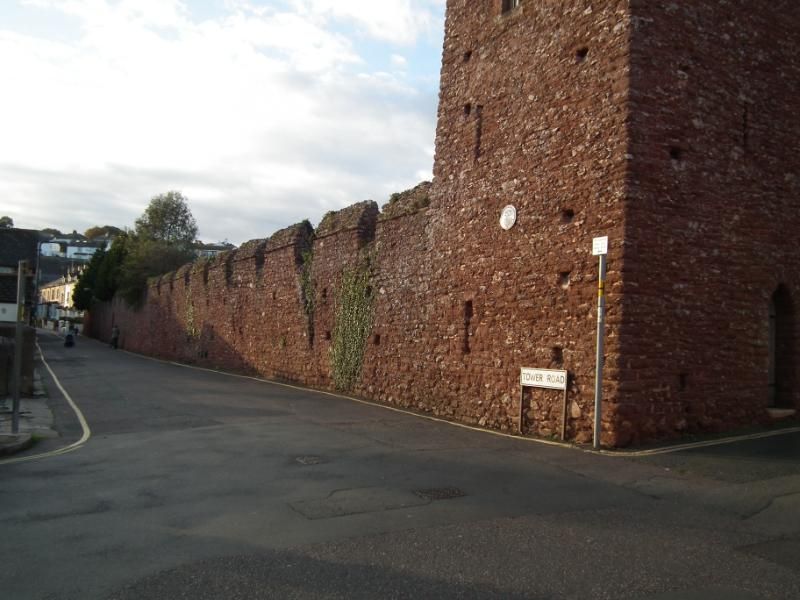 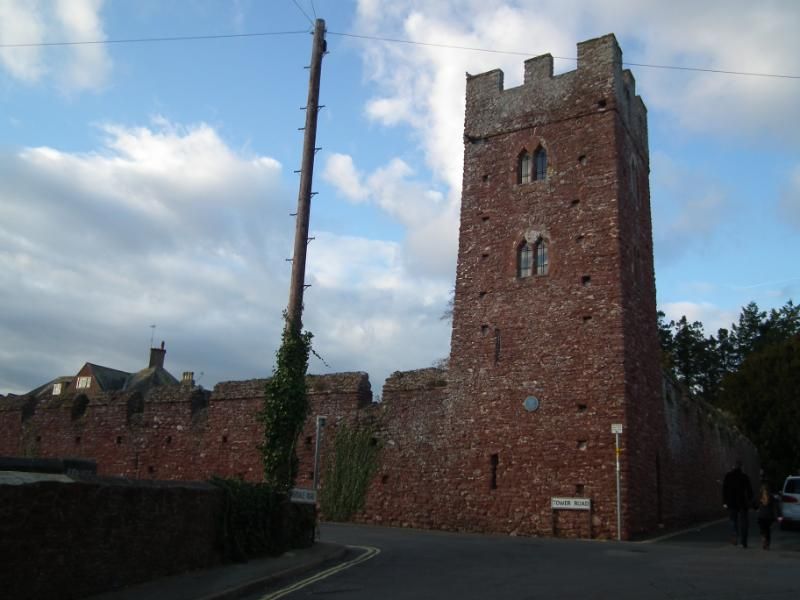 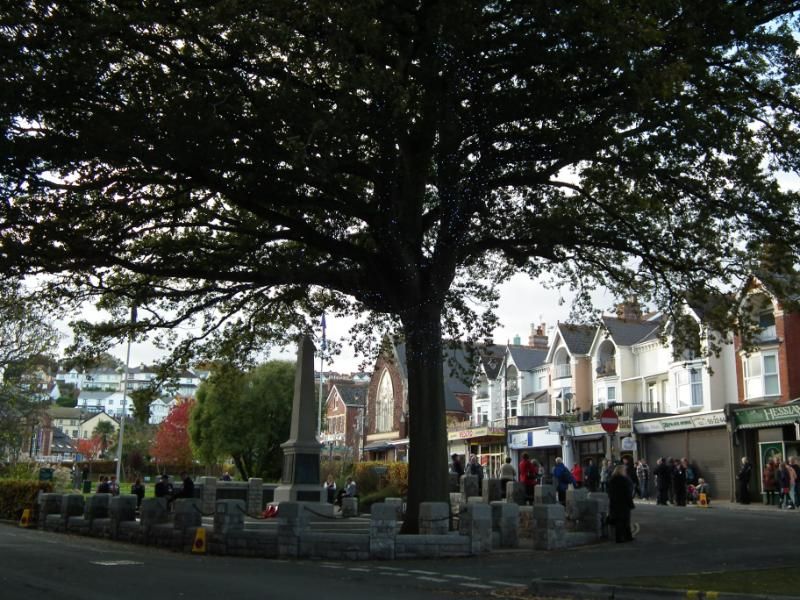 |
|